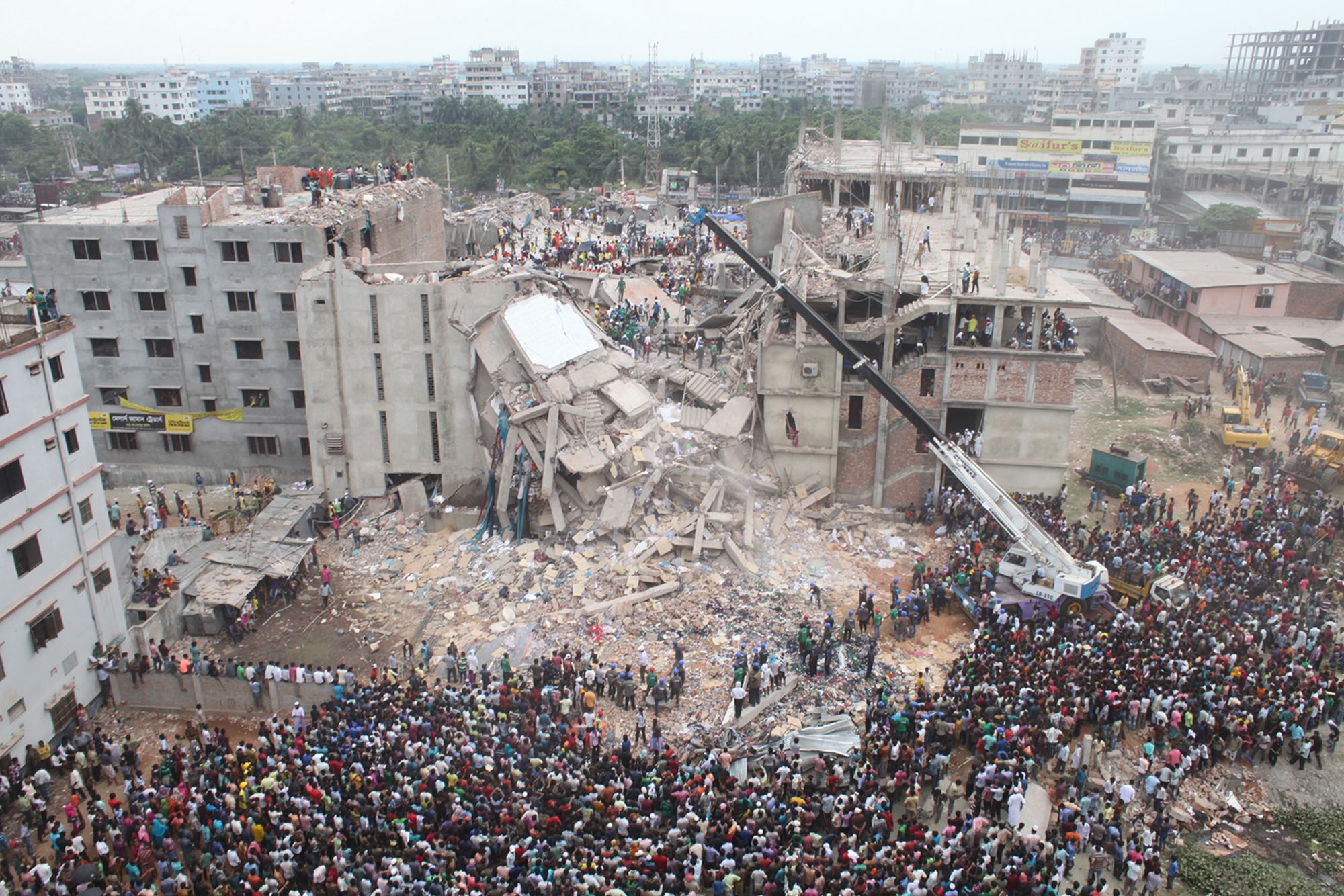Trade union leader Babul Akhter was working at Bangladesh’s labor ministry in Dhaka on the morning that Rana Plaza, a nine-story building crammed with garment factories, collapsed. He rushed to the scene in Savar district, around 20 miles outside the capital. There he heard the cries of trapped workers emanating from the rubble — a muffled cacophony he recalls sounding like the buzz of honeybees.
“We realized how helpless they were … and we were also helpless (in) that we couldn’t do anything for them,” said Akhter, who is secretary general of the Bangladesh Garments & Industrial Workers Federation (BGIWF). He spoke via a translator in a group interview with CNN and other media outlets.
Monday marks 10 years since history’s deadliest garment factory disaster. More than 1,100 people, mostly women, were killed. Over 2,500 others were injured. While businesses in the building’s lower floors had immediately closed when structural cracks were discovered a day earlier, thousands of factory workers were forced — either directly by their superiors, or indirectly by the pressure to earn a day’s wage — to return on the day of the collapse, despite many of them raising concerns.
“The workers did not have any say because they were working for minimum wage … and they were not even unionized,” Akhter said. “So, they couldn’t collectively raise the issue (of not returning to work).”
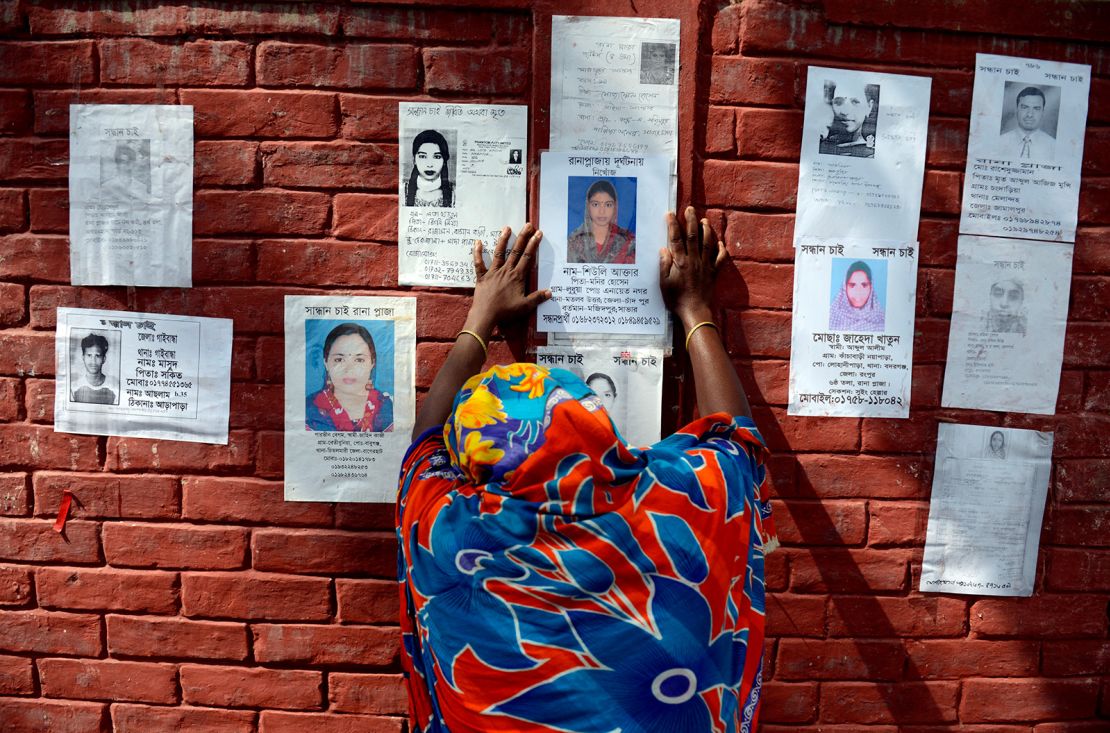
The collapse was triggered by vibrations from diesel generators switched on following a power outage. But subsequent investigations revealed a long catalog of failures, oversights and — according to organizations like the global nonprofit Transparency International — corruption at practically every stage of the seven-year-old building’s life.
Rana Plaza collapsed because substandard materials were used to build on the site of a filled-in pond, and because extra floors were added to expand the structure beyond its authorized design. It collapsed because authorities had permitted the building, originally planned for commercial purposes, to be converted to industrial use and additionally occupied by five garment factories. It collapsed because earlier audits were inadequate; warnings were ignored or dismissed.
In 2016, 38 people were charged with murder over the tragedy, including factory owners and government officials, though some of these individuals have since died or had their charges dropped. Rana Plaza’s owner, Sohel Rana, remains in custody as part of a lengthy ongoing trial. He has, in the meantime, been convicted on separate corruption charges.
But the search for accountability went far beyond individuals — and stretched beyond Bangladesh’s borders. Factories in Rana Plaza produced garments for the likes of Italian retailer Bennetton and British fast fashion brand Primark. As such, the disaster held a mirror up to the developed world, namely consumers hungry for cheap clothing and Western brands using low-cost production to meet demand.
In the collapse’s aftermath, numerous labels sourcing from Bangladesh vocally committed to improving worker safety in the country. So, a decade on, are the clothing factories that now account for 84% of the country’s exports any safer?
Groundbreaking agreement
The events of April 24, 2013 triggered swift — and yet, still belated — action from Bangladeshi authorities. Almost 20 garment factories were shuttered within two weeks of the disaster. But it was clear, as it had been before the collapse, that safety issues were endemic. Six months earlier, a major fire at the Tazreen Fashions factory outside Dhaka had claimed at least 117 lives; seven years before that, in 2005, the nine-story Spectrum factory had collapsed, killing 64 people.
Fast-forward to today, and major garment factory disasters — of that scale, at least — have seemingly been avoided. This is often credited to a groundbreaking agreement reached between brands, factories and trade unions less than a month after Rana Plaza: the Accord on Fire and Building Safety in Bangladesh.
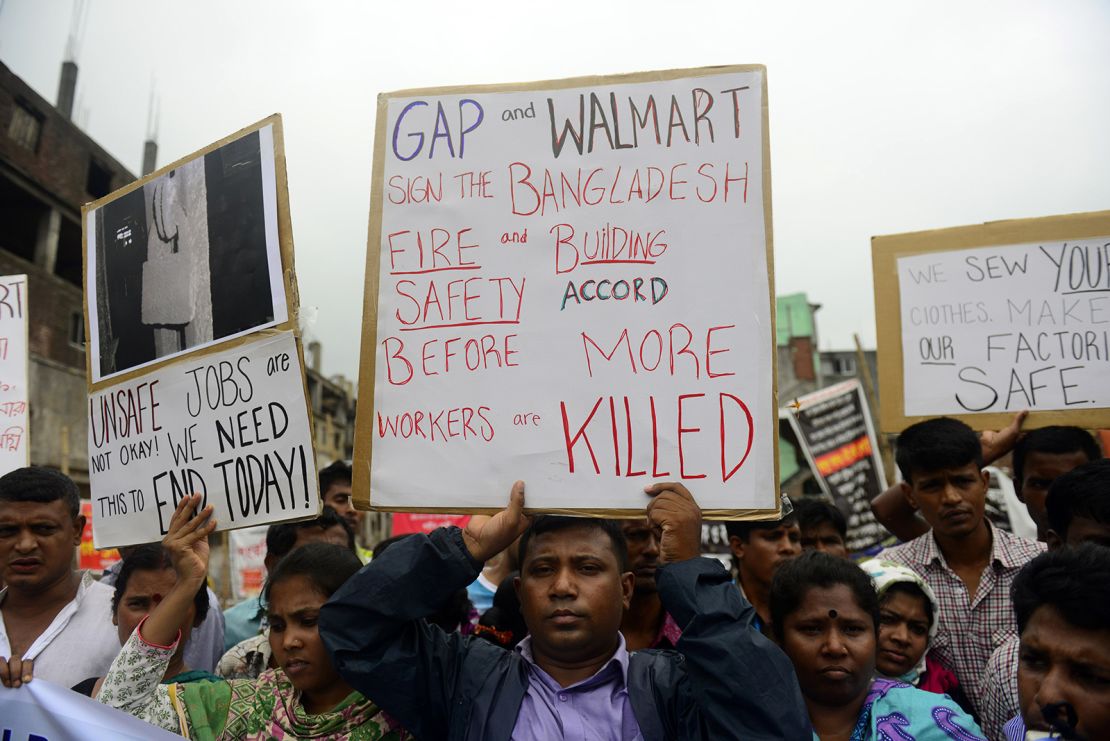
Signed at the time by over 200 brands, and applicable to any Bangladeshi factory or workshop supplying them with garments, the legally binding commitment established an independent inspection program spanning fire, electrical and building safety. Inspection findings are made publicly available. So too are improvement plans for underperforming factories, with corrective action implemented using funds committed by participating brands. The Accord has also introduced safety committees and complaint mechanisms via which workers can raise concerns — anonymously if they so wish.
Such are its successes that a Pakistani version of the Accord was announced last year and has been signed by 49 brands and retailers, including Zara’s parent company Inditex.
This is not to say Bangladesh’s garment industry has been incident-free. The International Labor Organization reported that, between Rana Plaza’s collapse and 2018, at least 35 further accidents in clothing factories had resulted in 27 deaths. Among them was a boiler explosion that killed 10 in 2017. (The Accord’s inspection process was expanded to include boiler monitoring shortly after).
To date, however, over 30,000 factory inspections have taken place under the agreement, with over 400 facilities completing what organizers call “initial remediation.” In 2021, the New York Times reported almost 200 factories with poor safety standards had lost contracts following Accord investigations.
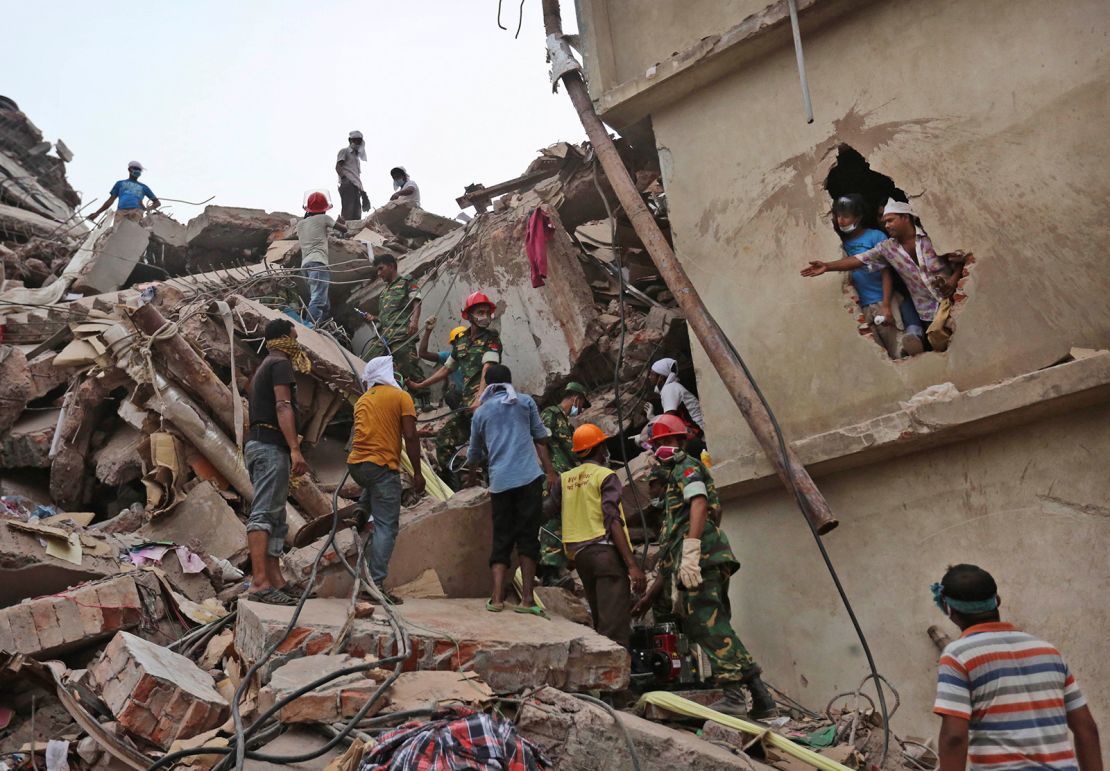
Christie Miedema of the Clean Clothes Campaign, a Netherlands-based nonprofit that served as one of the Accord’s signatories, cites real “success stories” in recent years.
“We know of very clear examples where an actual collapse has been prevented because a factory owner didn’t want to evacuate, but the Accord ordered them to do so until things were repaired,” she said on a video call. “We also know of examples where workers complained about safety … and were dismissed, then the Accord stepped in and said ‘No, you have to re-hire them because they can’t be retaliated against for (raising) safety issues.”
“It’s very difficult to quantify how many lives the Accord has saved, because you can never know,” she added. “But it is definitely thousands.”
Brands divided
The Accord is not without its shortcomings. For one, the relative absence of North American labels among signatories was conspicuous, with many seemingly concerned about financial commitments and the risk that legally binding commitments might lead to costly lawsuits. While there were a handful of exceptions — such as PVH Corp., the parent company of Tommy Hilfiger and Calvin Klein — the likes of Wal-Mart, Gap, Target and Macy’s did not join.
These brands, and others, instead formed their own group called the Alliance for Bangladesh Worker Safety. It, too, organized inspections and safety initiatives at hundreds of Bangladeshi factories in its members’ supply chains. And while the Alliance was criticized for being less rigorous and binding than the Accord, it has claimed its own successes. Before concluding its five-year tenure, as planned, in 2018, the organization reported that 93% of faults identified were corrected, while 178 facilities were removed from its list of compliant factories. (Many of the members went on to form Nirapon, an organization that continues to work in Bangladesh to carry out what it calls “the next phase” of the Alliance’s safety programs.)
Even putting aside the differences between these two rival initiatives, the absence of a collective response among Western brands was counterproductive, Miedema said, adding: “There could have been a united best standard… (but the split) weakened the unity of the sector in responding to this tragedy.”
What’s more, the two agreements still only covered around half of the country’s thousands of garment factories. Many small manufacturers and subcontractors continued to operate outside their remits — as have factories used by Chinese and Korean brands, which were barely part of the conversation in 2013, according to Miedema.
Wider concerns
Initially lasting five years, the Accord was renewed in 2018 and then for another two years in 2021. Nazma Akter, a former child worker who founded the labor rights organization Awaj Foundation, called on more US companies to participate.
“Any brand that doesn’t sign the Accord does not respect the workers and does not believe in freedom of association,” she said, adding: “Without mandatory human rights due diligence, there is no accountability, no transparency and no penalty or punishment for brands like (those using factories in) Rana Plaza.”
Groups like the Clean Clothes Campaign are not only urging brands to renew the agreement again later this year, but to expand their commitments to cover wages, union rights and worker welfare, ranging from menstrual health to tacking gender-based violence. For Miedema, addressing these issues is as intrinsic to worker safety as structural or electrical complaints.
“We’ve seen progress in one very specific area that’s very much connected to what happened at Rana Plaza — building safety — but not in these other areas,” she added. “If (Rana Plaza’s) workers had a union, they might have resisted entering together. If they had wages that sustained them, then maybe the threat of losing a month’s wages …. wouldn’t have sounded so terrible.”
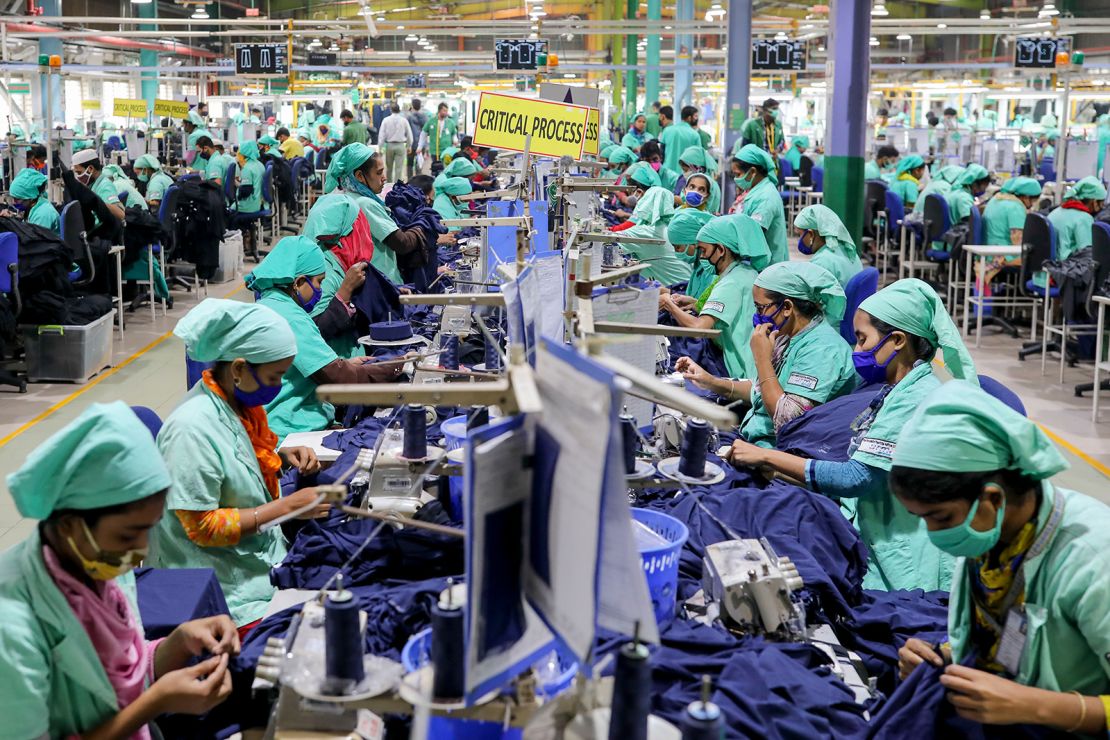
In 2013, amid the wave of protests and strikes immediately following the disaster, Bangladesh’s government raised the minimum salary for garment workers from 3,000 to 5,300 taka (then $68) a month. Five years later, this sum rose again to 8,000 taka (then $95), though the global union IndustriALL is currently demanding a figure three times higher, saying that “roaring inflation” has left Bangladesh’s factory workers “struggling to make ends meet.”
And while wages have crept up since the disaster, they have been vastly outpaced by the growth of the garment industry. Clothing exports from Bangladesh, which is aspiring to become a middle-income country by 2031, jumped from $14.6 billion in 2011 to $33.1 billion in 2019, according to consultancy McKinsey.
Akter, who began working in garment factories in the 1990s when she was just 11 years old, echoed the calls to look beyond the strictest definitions of worker safety.
“Our members now feel very empowered and confident when safety issues come about,” she said, reflecting on the improvements since the Rana Plaza collapse. “But we are fighting not only on safety issues — we are trying to establish that the Accord should look after working conditions and (tackle issues like) gender-based violence … It’s about empowering and ensuring workers’ voices and union rights.”
Top image caption: Workers take part in the rescue operation at the site of the Rana Plaza building collapse in Savar, near Dakar, Bangladesh, on April 25, 2013.
This article was updated to reflect the latest number of signatories for the Pakistan Accord.
